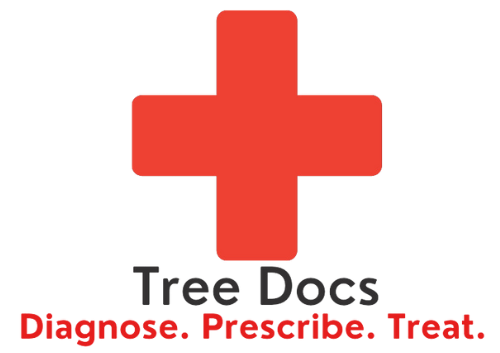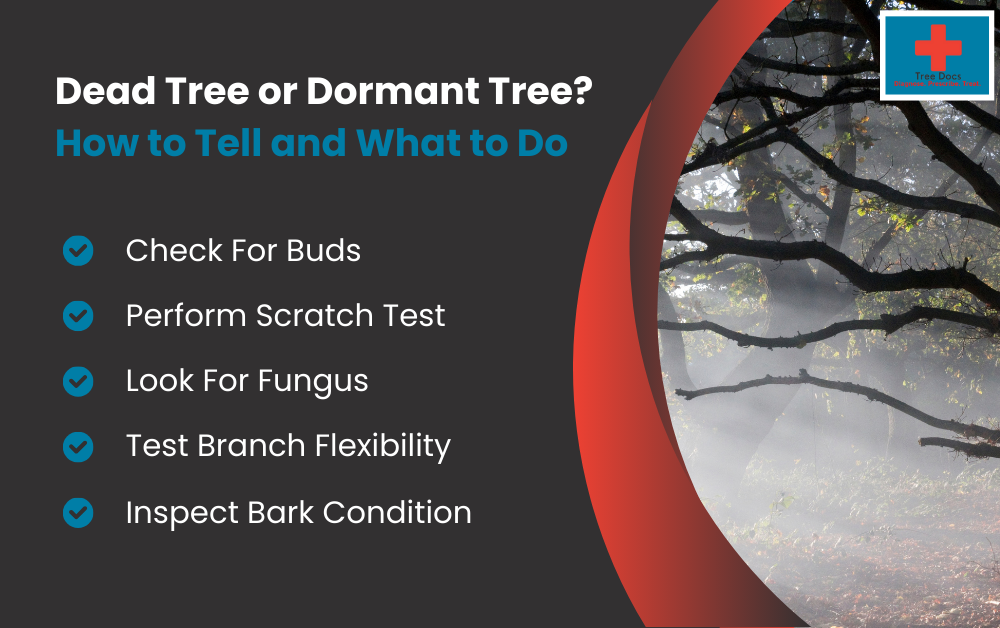Have you ever looked out at your yard in early summer and wondered if that one tree—still bare and lifeless—has died? Or is it just taking its sweet time waking up from dormancy? The difference between a dead tree and a dormant one isn’t just a matter of curiosity. It could be the difference between peace of mind and a safety hazard. In this guide, we’ll break down how to tell the difference, what to watch for, and when to call in the experts.
What’s the Difference Between Dormant and Dead?
Trees, like people, respond to their environment. Dormancy is a natural part of a tree’s life cycle—a period of rest to conserve energy during extreme conditions, whether it’s winter cold or summer drought. Think of it like hibernation: the tree is alive, just not showing many outward signs.
On the other hand, a dead tree has stopped functioning entirely. It’s no longer drawing nutrients from the soil or water from its roots. Eventually, a dead tree becomes brittle, hollow, and dangerous.
Spotting the difference between the two can be tricky, especially during transitions from one season to another. That’s where a little know-how comes in.
Signs Your Tree May Just Be Dormant
If you’re unsure about a tree’s condition, the following signs can suggest it’s still alive—just taking a break:
1. Buds on Branches
Look closely at the tips of branches. Even if the tree isn’t fully leafed out, tiny buds are often present. These may be small and closed, but they indicate life. Many tree species, especially native hardwoods, take longer to bud and leaf in the spring—sometimes as late as June.
2. The Scratch Test
This is one of the easiest DIY methods to check if your tree is still alive. Gently scrape a small section of bark on a young branch using your fingernail or a pocketknife. Underneath, you should see a green, moist layer called the cambium. If it’s green, the tree is alive. If it’s dry and brown, that part of the tree may be dead—but don’t panic yet. Check multiple branches to be sure.
3. Flexible Branches
Try bending a small twig. If it bends and feels pliable, it likely still has life in it. Dead branches snap cleanly and feel dry and brittle.
4. Even Bark Appearance
While some bark peeling is normal, a healthy dormant tree will still have a consistent bark texture and color across the trunk and major branches. Extensive cracking or bare patches may point to deeper issues.
5. Species and Local Climate
Some species are naturally late bloomers, while others go dormant in periods of environmental stress. If your area experienced late frost, heavy rain, or an unusually dry spring, your tree may be in stress dormancy—a protective measure until conditions improve.
6. Root Zone Health
A tree’s roots are just as important as its canopy. Signs of healthy soil around the base—such as earthworms, a loose texture, and moisture retention—are positive indicators. Dormant trees still depend on their root systems staying active.
Signs Your Tree May Be Dead
While dormancy can explain some of your tree’s sluggishness, these red flags often point to something more permanent:
1. No Buds or Leaves Deep Into Summer
If June or July rolls around and your tree still looks like winter, it’s time to investigate. Most healthy trees will show clear signs of life—leaves, buds, or new growth—by early summer.
2. Brittle, Snapping Branches
Dead branches break easily and are often dry and hollow inside. Try bending several branches throughout the tree, not just one section.
3. Discoloration or Soft Spots on the Trunk
A soft, spongy trunk or areas of deep discoloration (especially near the base) are strong indicators of rot or decay. This usually means the internal structure is compromised, and the tree is no longer viable.
4. Fungal Growth
Mushrooms growing at the base of the tree or shelf fungi on the trunk suggest advanced decay inside the wood. Fungi thrive on dead organic matter, and their presence often means the tree’s core has deteriorated.
5. Excessive Bark Loss
A dead tree often loses bark in large chunks. If you notice large bald spots with exposed wood, especially if the tree doesn’t seem to be healing over time, it could be a sign of death.
6. Insect Infestation
Certain pests, like carpenter ants or bark beetles, favor dead or dying wood. If you spot sawdust piles, small boreholes, or large numbers of insects inside or around the trunk, there’s a good chance the tree has already expired.
Still Unsure? Here’s What to Do
Not every tree will give you clear-cut signs right away. If you’re in a gray area, here’s a safe approach:
– Give It a Few Weeks
Weather plays a big role in how and when trees leaf out. If your tree is late but shows no obvious signs of rot, fungus, or brittleness, give it another 2–3 weeks while monitoring its condition.
– Track Progress With Photos
Take weekly photos from the same angle. You’ll be surprised how easy it is to notice subtle changes—or lack thereof—over time.
– Avoid Premature Pruning
Don’t start removing limbs unless you’re sure they’re dead. Pruning too early can damage a tree that’s just dormant and trying to recover.
– Check Multiple Branches and Areas
Sometimes, part of the tree dies while the rest remains alive. That’s why it’s important to test several limbs across different parts of the tree—not just one.
– Call a Certified Arborist
If you’re unsure, it’s always worth it to bring in a professional. An arborist can diagnose tree health, check for disease or pests, and recommend a treatment or removal plan if needed.
Preventing Tree Death: Summer Tree Care Tips
While some tree death is unavoidable, many issues can be prevented with proper care. Here are a few tips for keeping your trees healthy this summer:
- Water Deeply and Infrequently: Shallow watering encourages surface roots. Deep watering once or twice a week promotes strong, deep root systems.
- Mulch Smart: A layer of mulch keeps roots cool and retains moisture. Keep it 2–4 inches deep and avoid piling it against the trunk (“mulch volcano”).
- Avoid Soil Compaction: Don’t park cars or store heavy items under your tree. Compacted soil restricts root growth and oxygen flow.
- Inspect Regularly: Check for changes in leaf color, branch strength, bark condition, and overall symmetry.
- Fertilize Only When Needed: Over-fertilizing can harm more than help. A soil test can guide nutrient decisions.
- Schedule a Health Assessment: An annual checkup from a certified arborist is the best defense against disease, pest problems, and structural weaknesses.
How Tree Docs Can Help
At Tree Docs, we know that tree health is more than what’s visible above ground. Our team of certified arborists uses advanced diagnostics to assess whether a tree is struggling, dormant, or beyond saving. We offer:
- Tree Health Evaluations
- Emergency Storm Response
- Tree Removal & Stump Grinding
- Soil & Root Care Programs
- Tree Injections & Fertilization
- Cabling & Structural Support
- Preventative Pest Management
Whether you need a second opinion or immediate action, we’re here to make sure your trees—and your property—stay safe, strong, and beautiful.
Don’t Guess—Know What Your Tree Needs
Spotting the difference between a dormant and dead tree can be a challenge—but it’s one worth tackling. Acting early can prevent property damage, save a cherished tree, or help you plan for safe removal. If you’re still unsure, don’t guess—get answers. Tree Docs is ready to help you make the right call.
Call us today at (330) 523-6585 or
Visit TreeDocs.com to schedule your expert tree evaluation.



